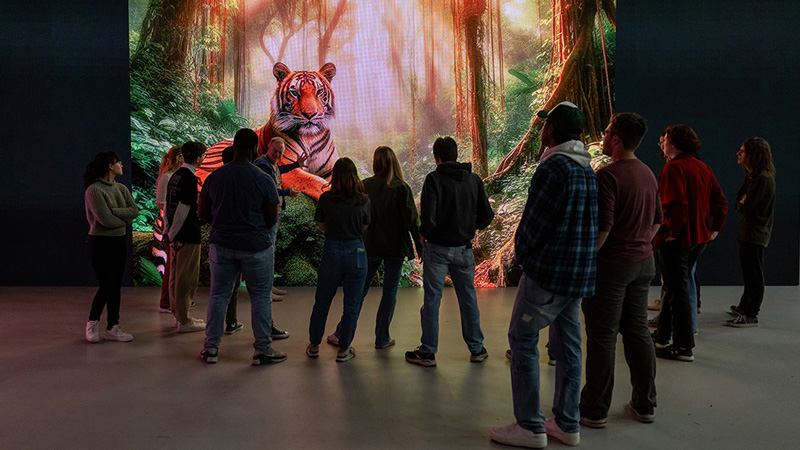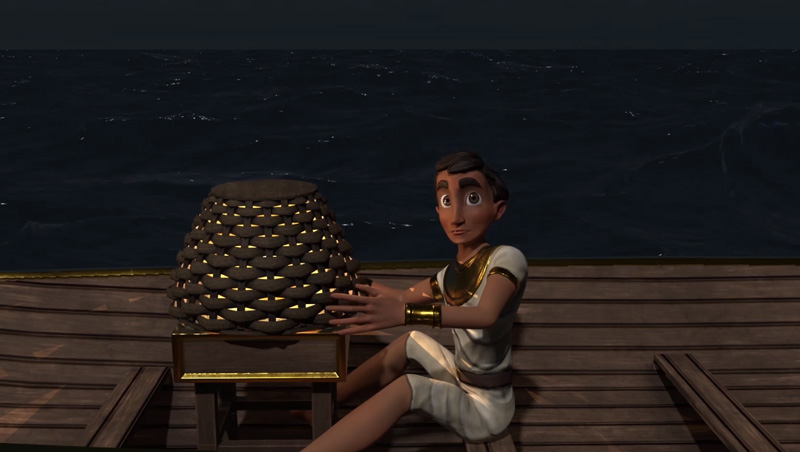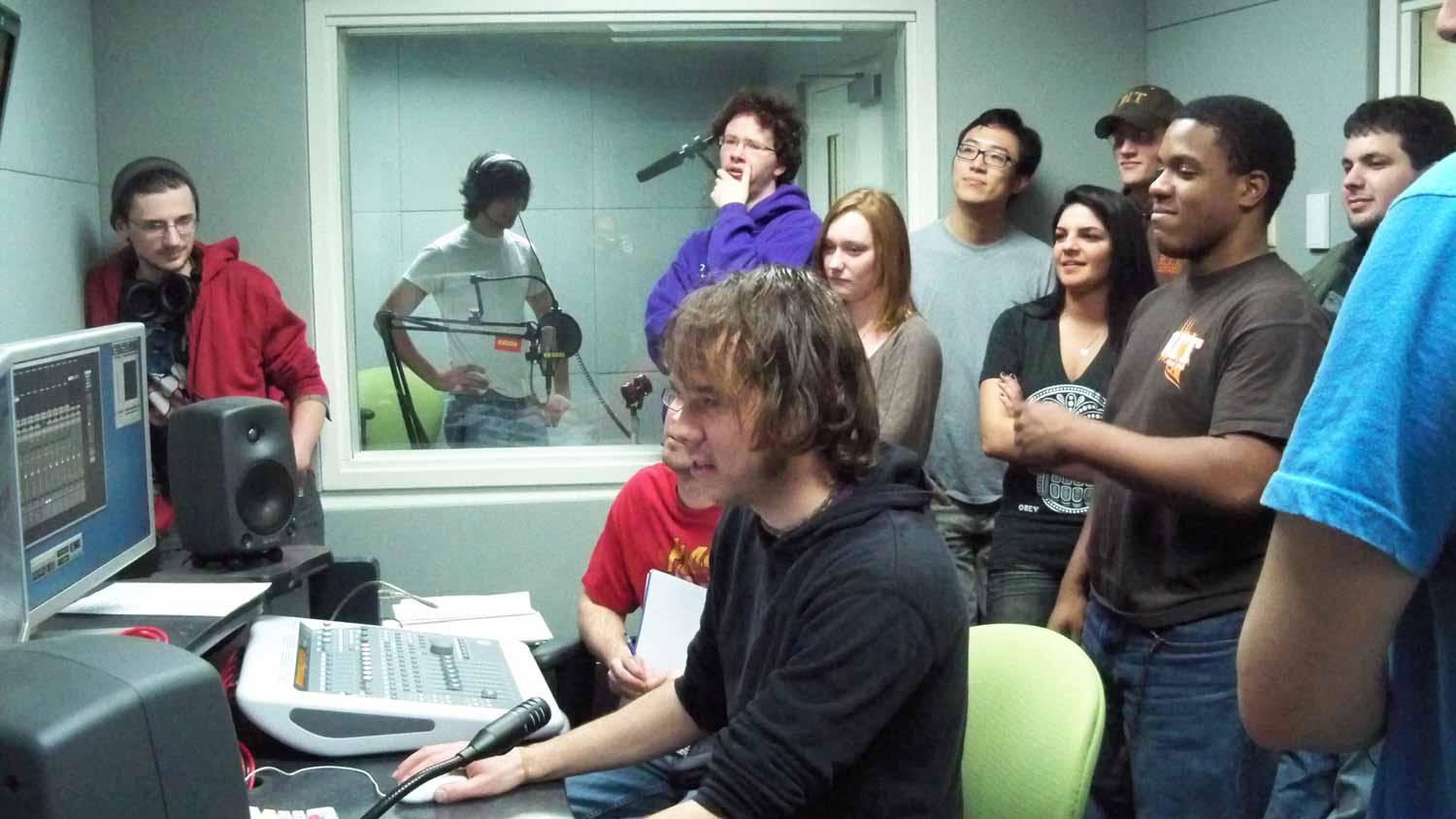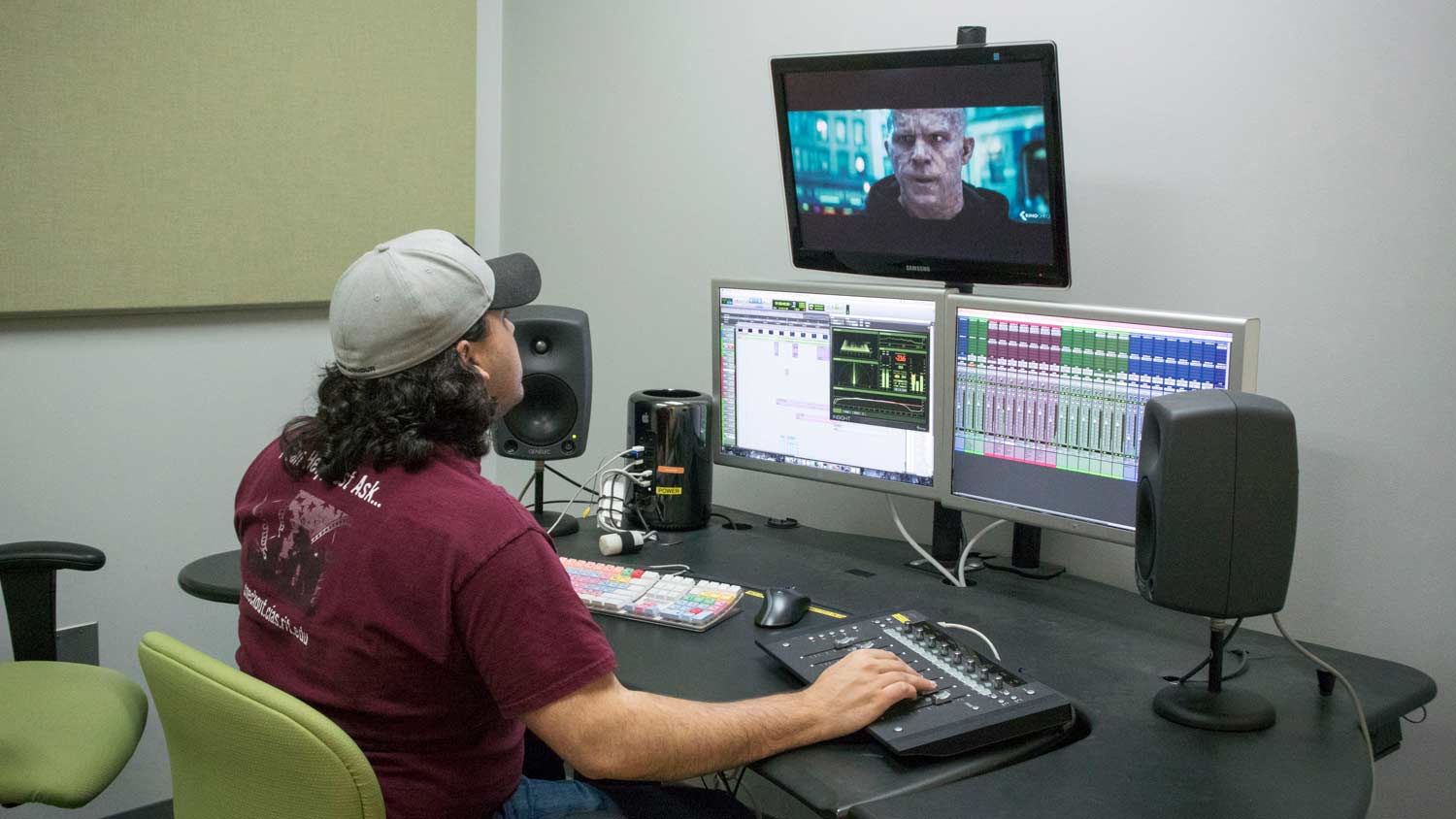Animation Option - Film and Animation BFA
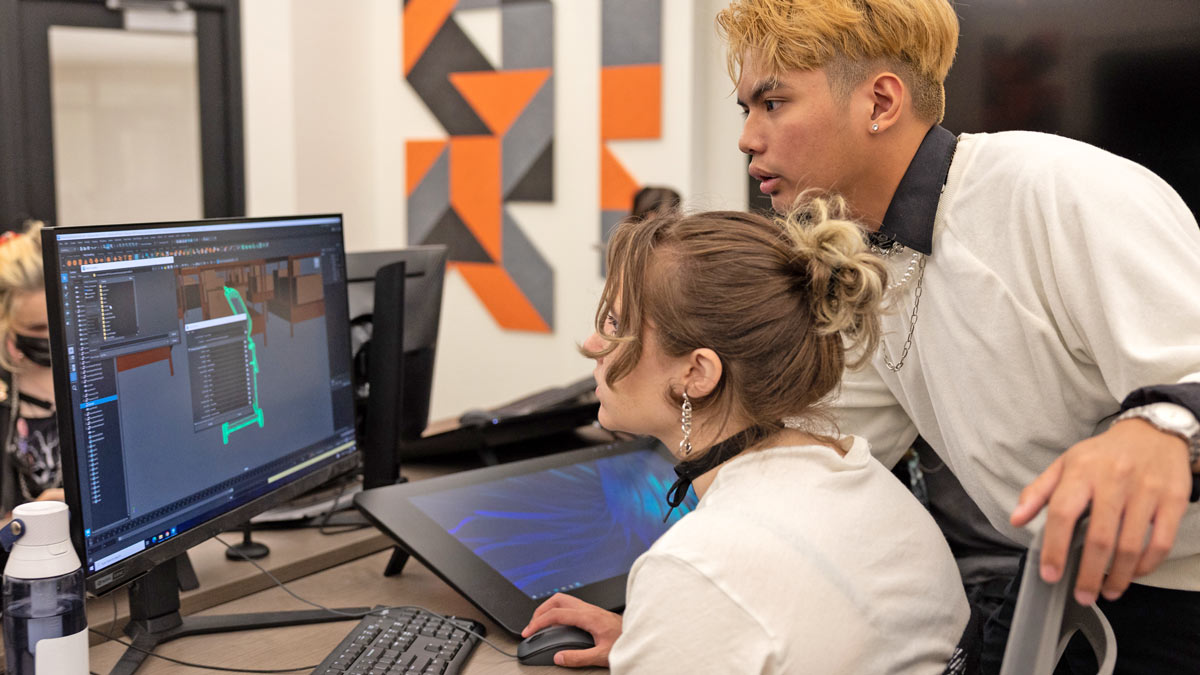
Animation Option
Film and Animation BFA
- RIT /
- College of Art and Design /
- Academics /
- Animation Option - Film and Animation BFA
Create films, games, AR/VR, and effects through storytelling, design, and sound in RIT’s comprehensive animation program.
Overview for Animation Option - Film and Animation BFA
Why Study Animation at RIT
Focused Degree Options: Choose one of three tracks: 2D, 3D, or stop motion animation.
Get Ahead in the Summer: Enjoy a selection of the School of Film and Animation’s courses during the summer term.
Study in LA: Spend a semester in Los Angeles with RIT in LA, where you can intern at top studios and entertainment companies.
The animation BFA is an option within the BFA in film and animation. The Animation option enables students to choose one of three tracks:
- 2D animation concentrates on traditional forms drawn by hand, a mixture of both traditional and digital, or all digital origination.
- 3D animation courses focus on advanced 3D modeling, lighting, texturing, and animating in a 3D space.
- Stop motion focuses on digital technology in support of puppet fundamentals and non-puppet frame-by-frame techniques.
Additionally, students can work in experimental forms, animated documentary, and mixed-media storytelling.
RIT’s Animation BFA
While Animation students focus on a particular technique, they are encouraged to explore all methods and approaches. The program builds up from foundation drawing and design to full-fledged filmmaking.
Regardless of the medium, students make films from day one, culminating in a thesis film their final year. They learn and create through the entire process, from story, design, and animation to post-production and distribution. They will draw, paint, rig, model, texture, light, build, and animate past the edges of their creativity while learning the art and craft of visual storytelling.
Labs and classrooms are filled with the latest software, technology, sound, and screening options, including:
- TVPaint (2D)
- Maya (3D)
- Toon Boom Harmony
- Dragonframe (stop-motion)
- Adobe Creative Suite
The School of Film and Animation program also offers a limited selection of courses during the summer term. For information on summer workshops, please contact the school.
The school maintains memberships in a number of professional organizations, including:
- Animation World Network
- College Art Association
- Rochester Audio Visual Association
- Society of Motion Picture and Television Engineers
- University Film and Video Association
- Siggraph
- BEA
Hands-On Experience to Gain Real World Skills
Study Away: LA gives film and animation majors the opportunity to spend a semester in Los Angeles learning from industry professionals. The bulk of your time will be spent at internships, but you'll also complete two courses that will complement your study-away experience. Learn more about RIT in LA and how you can gain industry experience in traditional filmmaking, animation, or cutting-edge areas like virtual production in Los Angeles, the epicenter of the global entertainment universe.
Interested in a Career in Game Arts?
We’ve got you covered. The animation option allows you to explore your creative interests related to video games. You’ll have endless opportunities to collaborate with developers and fellow artists on game and digital media projects. Animation alumni have gone on to establish successful careers as game artists. Learn how you can use the animation option to launch a career in game arts.
-
Apply for Fall 2026
First-year students can apply for Early Decision II by Jan. 1 to get an admissions and financial aid assessment by mid-January.
-
Join Us for Accepted Student Open House
Visit campus on March 28 or April 11 to meet faculty, tour campus, and ask your questions.
Careers and Experiential Learning
Typical Job Titles
| 3D Modeler | Art Director | Character Animator |
| Character Designer | Creative Director | Experimental Film Artist |
| Layout Artist | Post Production Supervisor | Producer |
| Rigging Artist | Story Artist | Visual Development Artist |
| Visual Effects Compositor | Writer |
Industries
-
Animation
-
Movies, TV, and Music
-
Writing and Editing
Cooperative Education and Internships
What’s different about an RIT education? It’s the career experience you gain by completing cooperative education and internships with top companies in every single industry. You’ll earn more than a degree. You’ll gain real-world career experience that sets you apart.
Co-ops and internships take your knowledge and turn it into know-how. Co-op in the College of Art and Design provides hands-on experience that enables you to apply your artistic capabilities in dynamic professional settings while you make valuable connections between classwork and real-world applications.
Students in the animation option are strongly encouraged to complete a cooperative education or internship experience.
Creative Industry Days
Connect with Design Industry Leaders
RIT’s Office of Career Services and Cooperative Education hosts Creative Industry Days, which connects students majoring in art, design, film and animation, photography, and select computing majors with companies, organizations, creative agencies, design firms, and more. Creative Industry Days are a series of events that allow you to network with company representatives and interview directly for open co-op and full-time employment positions.
Featured Work and Profiles
-
RIT project increases representation in animated films
The Character Mosaic Project, led by School of Film and Animation faculty and students, is providing animators more pathways for creative storytelling by developing a library of free characters rigs....
Read More about RIT project increases representation in animated films -
Experience Film and Animation in Los Angeles
For students interested in a career in the entertainment industry, Los Angeles is the best place to learn. RIT in LA is a semester-long study away program that gives School of Film and Animation...
Read More about Experience Film and Animation in Los Angeles -
Video Game Development
“That Damn Goat!” is a party game where chaos reigns, frustrations mount and everything you think you know about your situation is instantly thrown out of whack by a head-butting goat with magical...
Read More about Video Game Development -
Sizzle Reel
A collection of student work from Rochester Institute of Technology's School of Film and Animation, which offers a BFA and MFA in Film and Animation and a BS in Motion Picture Science.
Read More about Sizzle Reel -
Stop Motion Animation That Packs a Visual Punch
Friendships formed at RIT helped lay the foundation for Apartment D, an alumni-owned indie stop-motion animation studio. By leaning into their authentic approach to the craft, film and animation...
Read More about Stop Motion Animation That Packs a Visual Punch -
Tell Compelling Stories in the School of Film and Animation
RIT School of Film and Animation students are exposed to cutting-edge technology, unmatched faculty and facilities, and a supportive community.
Read More about Tell Compelling Stories in the School of Film and Animation
Admissions and Financial Aid
This option is part of the Film and Animation BFA. Please visit the degree program page for admission requirements.
Financial Aid and Scholarships
100% of all incoming first-year and transfer students receive aid.
RIT’s personalized and comprehensive financial aid program includes scholarships, grants, loans, and campus employment programs. When all these are put to work, your actual cost may be much lower than the published estimated cost of attendance.
Learn more about financial aid and scholarships
Related News
-
October 30, 2025

‘TheWrap’ recognizes RIT as one of the nation’s top film schools
Forward-thinking faculty; curriculum that fuses technology, the arts, and design; and a legacy of priming students with a maker mentality helped RIT’s School of Film and Animation maintain its place on TheWrap’s list of Top 50 Film Schools of 2025.
-
September 24, 2025

New School of Film and Animation director, faculty roles for 2025-26
Ricky Figueora taking over as the new director of RIT's School of Film and Animation headlines exciting promotions and additions to the College of Art and Design faculty.
-
September 12, 2025

Experimental animators bring new dimension to musical performance
Animation is most often viewed on a screen. But when animators break traditional rules and abandon the “almighty rectangle,” Christine Banna says artistic magic can happen.
Contact
- Brian Larson
- Associate Professor
- School of Film and Animation
- College of Art and Design
- 585‑475‑2711
- bjlppr@rit.edu
School of Film and Animation




